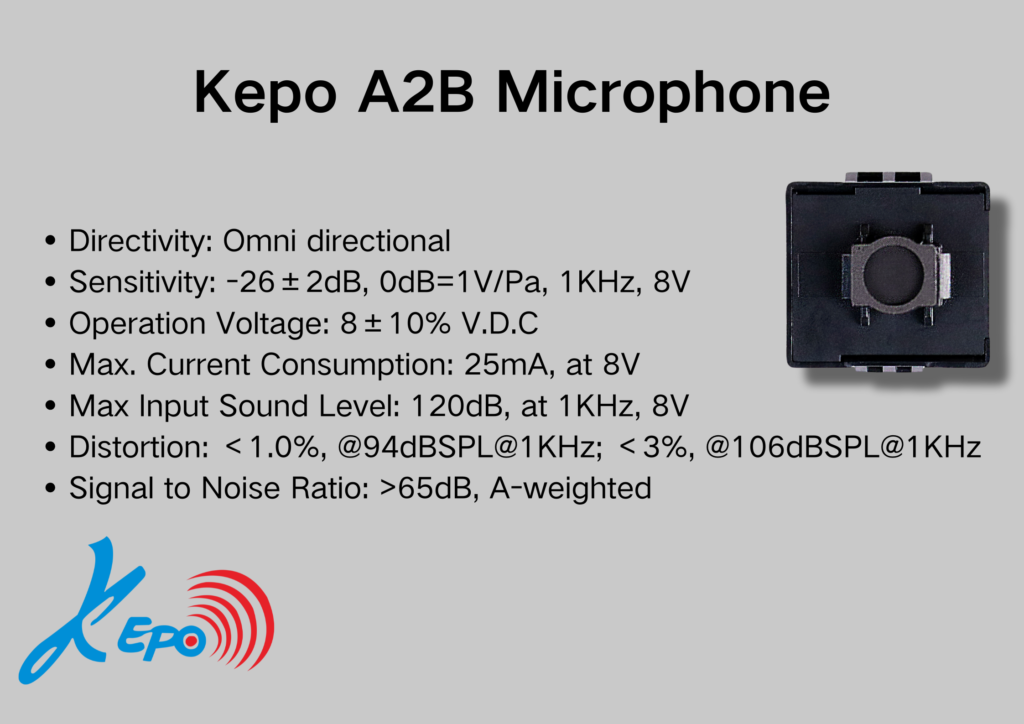As automotive technology and smart cabin systems evolve, the interaction between drivers and vehicles has reached new heights, especially in audio, acoustics, and voice applications. The Kepo A2B MIC, leveraging A2B technology, stands out with its high-fidelity audio, low-latency transmission, simplified wiring, low power consumption, and strong anti-interference capabilities, significantly enhancing the audio experience.

Difference between traditional microphones and Kepo A2B MIC
Kepo A2B MIC exhibits substantial advantages over traditional automotive microphones in terms of audio transmission technology, sound quality and latency, power consumption and efficiency, system integration and scalability, anti-interference capabilities, and functionality and applications. Its high-fidelity, low-latency, low-power, and easy integration features make it highly competitive in modern audio systems, particularly in complex automotive environments.
Kepo A2B MIC Features
Directivity: Omni-directional
Sensitivity: -26±2dB, 0dB=1V/Pa, 1KHz, 8V
Operation Voltage: 8±10% V.D.C
Max. Current Consumption: 25mA, at 8V
Max Input Sound Level: 120dB, at 1KHz, 8V
Distortion: <1.0%, @94dBSPL@1KHz; <3%, @106dBSPL@1KHz
Signal to Noise Ratio: >65dB, A-weighted
Automotive Applications
ANC Noise Reduction
Phantom Power, Multi-MIC Connections
Connection between Audio Head Unit and Amplifier
Audio Signals, Control Signals, Software Updates, Secure Connections
Smart Antenna
Remote AM/FM/Satellite Radio Reception
ECU Audio Connection
CD, Bluetooth, USB Audio Bridge
Future Development
A2B microphones and the technology behind them are situated in a rapidly evolving market environment. As the demand for audio equipment increases and technology advances, A2B technology will occupy a significant position in the future audio market. Its high-fidelity, low-latency, and easy integration features promise broad application prospects in home, automotive, and professional audio equipment, driving audio experience to new heights.







